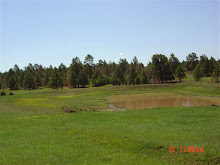New Research Puts Spotlight on Lapindo
UK scientists have made public evidence which they claim shows Lapindo Brantas’ drilling for gas was responsible for unleashing a mud volcano in Indonesia which left tens of thousands of people homeless, according to reports.
News services 15 February 2010 10:12 GMT
The new data, according to an international team of scientists led by Durham University, provides the strongest evidence to date that the world's biggest mud volcano was not caused by an earthquake that occurred two days earlier and 174 miles away, as Lapindo claims, a report published in the UK’s Observer newspaper said.
"There can be no doubt at all that it was physically impossible for the earthquake to cause this mud volcano," lead professor on the research Richard Davies told the Observer.
"The disaster was caused by pulling the drill bit out of the hole while the hole was unstable. It's like pulling up a bicycle pump, it acts like a plunger, sucking the water and gas from the surrounding rock in a way that could not be controlled."
All efforts to stem the volcano's flow have failed, including the construction of dams, levees, drainage channels and even plugging the crater with concrete balls.
"It could well go on for a few decades," said Davies, who has visited Lusi several times. "It's like taking the lid off a giant cola bottle.
"We found that one of the on-site daily drilling reports states that Lapindo Brantas pumped heavy drilling mud into the well to try to stop the mud volcano. This was partially successful and the eruption slowed down. The fact that the eruption slowed provides the first conclusive evidence that the bore hole was connected to the volcano at the time."
Their research identifies five critical drilling errors behind the disaster, the key ones being that there was no protective steel casing around the well, and that the drill was pulled out when the situation underground was unstable.
The enormous Lusi volcano in Sidoarjo, East Java, has been spewing out the equivalent of 60 Olympic swimming pools of boiling mud a day since it first erupted in May 2006 from a drilling hole, owned by the oil and gas company.
Thirteen villages have been smothered by the sludge and 60,000 people have been made homeless. The mud now covers seven square kilometres. More>>>






0 comments:
Post a Comment